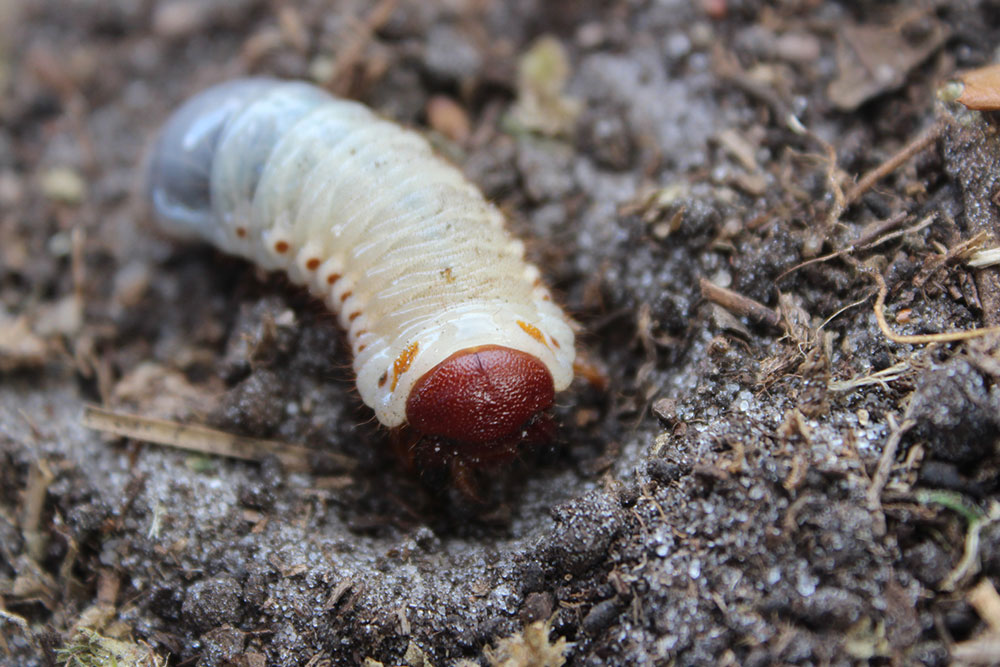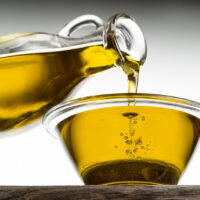7 Ways to Get Rid of Lawn Grubs Naturally
Grubs are the larvae of Japanese beetles, June beetles, chafers, and other insects that feed on organic material, such as grass roots. They are generally active in spring and summer. Grub infestations can destroy the lawn, leading to patchy growth, a lawn that looks drought-stricken, and an increase in moths, beetles, and pests like skunks and raccoons.

Introduce natural predators
Grubs have many natural predators. However, individuals must think twice before deciding which one to introduce to the lawn. While pests like raccoons can wreak havoc on the grass, birds like chickadees, blue jays, robins, and even backyard chickens are gentler. They feast on grubs, helping clear an infestation safely. To use this method, homeowners must make the lawn more inviting for birds. Setting up installations like birdbaths, feeders, and birdhouses around the lawn can help.
Limit moisture
Like many other insects, grubs need moisture to thrive. So, if possible, one should create a drought-like condition in the lawn. A lack of water will kill eggs and young grubs, helping reduce their population quickly. The best time to try this trick is around July. Although the method is non-toxic and easy, individuals should remember that it can destroy the rest of the lawn if not done carefully.
Use milky spores
Milky spores are bacteria that affect Japanese beetles. They are available in powdered and granular forms in stores and can be applied using an inexpensive spore dispenser. However, one must use the treatment a few times a year for two to three years. After that, the results will last 15 to 20 years, making it a cost-effective, long-term solution for getting rid of grubs. To successfully apply spores, individuals should pay close attention to the environment, such as temperature, moisture, soil structure, pH, and soil type. These sensitive spores develop best between 60 and 70℉. Also, they kill grubs of Japanese beetles, not others.
Use azadirachtin
A potent component found in neem oil, azadirachtin is useful for clearing Japanese beetles from the lawn. If someone cannot get azadirachtin, they can also opt for pure neem oil. Azadirachtin is considered relatively non-toxic (presents low toxicity to biocontrol agents, predators, etc.), while neem oil is considered non-toxic since it does not harm other people or organisms. To control grub populations, individuals must apply both azadirachtin and neem oil frequently. Additionally, one must note that these do not help kill mature beetles or stop them from laying eggs, causing the underlying problem to persist.
Add nematodes
Nematodes are another natural remedy to get rid of grubs. These parasitic worms feed on grubs and other pests without harming the lawn. Individuals can easily find nematodes at local garden stores. Once the packet of nematodes is opened, one must apply them quickly while following the instructions. For best results, experts recommend applying them early in the morning or late in the afternoon, as the sun may impact their effectiveness. Moreover, nematodes may need to be added periodically (once or twice a year for about three years) to clear the grub infestation. One should avoid spraying insecticides when using this remedy, as the harsh chemicals can harm or kill the nematodes, neutralizing their effect.
Make a grub killer with borax
Borax is another simple remedy to get rid of grubs. One can dilute this household cleaning ingredient with water and spray it around the areas of grub activity. Since borax contains boron (a chemical that could kill the lawn in high quantities), it is best to use it as a short-term treatment option.
Aerate the lawn
Dethatching and aerating the lawn by removing compacted soil reduces the hiding space for grubs, making their survival less likely. It also makes other remedies like milky spores and nematodes more effective, as they can easily penetrate the soil surface.
If all of this sounds too labor-intensive, one can consider using tried-and-tested methods involving chemicals. Generally, two chemicals help with grub removal: carbaryl and trichlorfon. Carbaryl is a short-lived carbamate compound that starts killing grubs within 10 to 14 days. However, since it can be toxic to other insects like bees, its application is best left to professionals.
The second chemical, trichlorfon, is an organophosphate that starts killing grubs within one to three days of application. The compound itself breaks down after seven to ten days. Both chemical grub-killers are best applied when the population of grubs is the highest, generally in the fall or early spring (before May).
Apart from these chemicals, homeowners and landscapers can use preventative grub treatments for lawns containing imidacloprid, thiamethoxam, or clothianidin. These treatments help reduce 75-100% of the grub population from the lawns. For the best results, they are best applied in June and July, with 0.5” of irrigation water.











